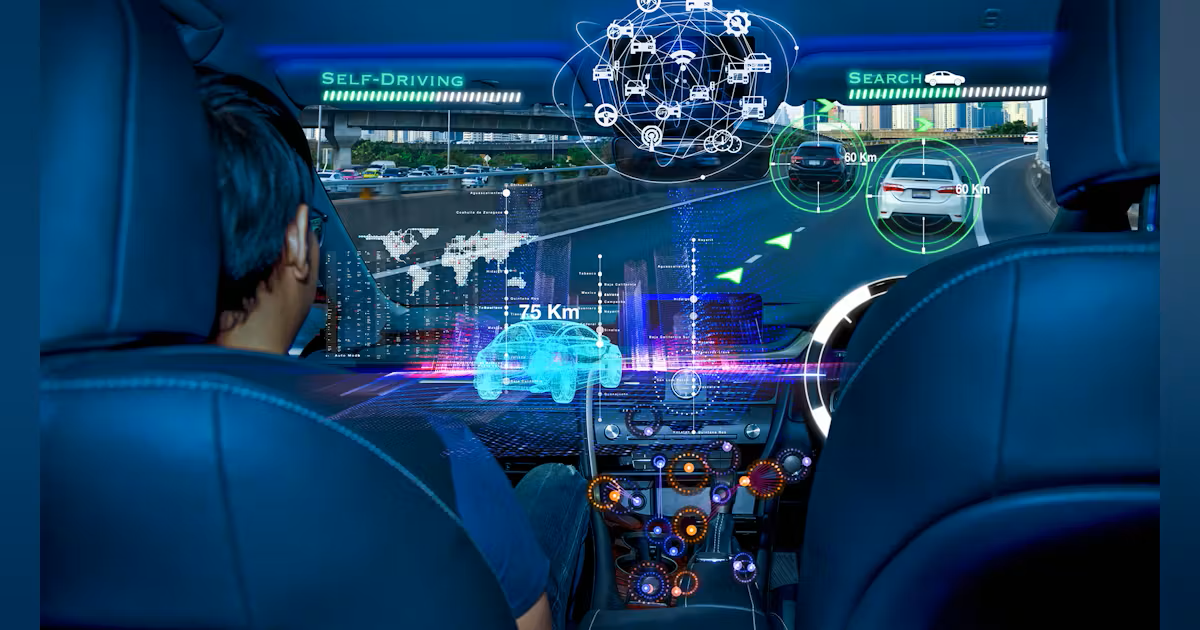Time: 2025-04-16 11:40:09View:
Field-Programmable Gate Arrays (FPGAs) are increasingly critical in automotive systems due to their high-speed processing, flexibility, and real-time capabilities. Below are key applications and concrete examples of FPGA deployments in modern vehicles.

Low-latency sensor fusion (camera + radar + LiDAR)
Parallel processing for AI-based object detection
Reconfigurability for algorithm updates
Tesla HW4.0 (Cybertruck/Semi)
Uses Xilinx FPGAs for pre-processing 8K camera feeds
Enables <10ms response time for emergency braking
Mobileye EyeQ6
FPGA-accelerated neural networks for 3D scene reconstruction
NVIDIA DRIVE Atlan
Combines GPU + FPGA for autonomous decision-making
Ultra-fast switching for motor control (PWM generation)
Precise battery management (cell voltage monitoring)
Tesla’s Battery Management System (BMS)
Altera (Intel) FPGAs monitor 4,000+ battery cells in real time
Porsche Taycan Inverter Control
Xilinx FPGAs optimize power delivery to dual motors
High-speed CAN FD/Ethernet packet processing
Hardware-level cybersecurity (encryption, intrusion detection)
AUTOSAR Ethernet Switches (BMW, Mercedes)
FPGAs handle 10Gbps data between ADAS/IVI systems
Tesla’s Secure Boot
Lattice FPGAs verify firmware signatures before ECU startup
4K video decoding (for multiple displays)
Low-latency audio processing (active noise cancellation)
Mercedes MBUX Hyperscreen
Xilinx FPGAs drive three OLED displays with zero lag
Rivian’s Quad-Display System
Uses FPGAs for seamless UI rendering
Rapid prototyping of AI algorithms (before ASIC production)
V2X (Vehicle-to-Everything) testing
Adaptive Headlights (FPGA-controlled beam shaping)
Biometric Vehicle Access (face recognition at edge)
| Feature | FPGA | MCU/GPU |
|---|---|---|
| Latency | Nanosecond-level | Millisecond-level |
| Power Efficiency | Optimized per-task | Always-on high power |
| Flexibility | Reconfigurable in-field | Fixed architecture |
Xilinx (AMD) – Used by Tesla, BMW, Porsche
Intel (Altera) – Dominates EV powertrain systems
Lattice Semiconductor – Leader in security applications
Microchip (Microsemi) – Certified for ASIL-D safety
FPGAs will play a pivotal role in:
L4/L5 autonomous vehicles (deterministic decision-making)
Zonal architectures (replacing legacy ECUs)
Quantum-resistant cryptography for connected cars
Here’s a deeper technical dive into FPGA-based LiDAR processing for autonomous vehicles, including architecture, challenges, and industry implementations:
Nanosecond Latency: Critical for real-time 3D point cloud generation (~5M points/sec).
Parallel Processing: FPGAs handle multiple LiDAR channels simultaneously (e.g., 128-beam lasers).
Deterministic Timing: Unlike GPUs, FPGAs guarantee fixed latency for safety-critical operations.
1. [Analog Front-End] → Raw signal from SPAD (Single-Photon Avalanche Diode) arrays → Time-to-Digital Converters (TDCs) on FPGA (picosecond resolution) 2. [Point Cloud Generation] → FPGA calculates XYZ coordinates via time-of-flight (ToF) → Noise filtering (e.g., median filters implemented in hardware) 3. [Object Classification] → FPGA-accelerated ML (e.g., Decision Trees for pedestrian detection) → Output to SoC (e.g., NVIDIA Orin) for sensor fusion
Luminar Iris LiDAR (Used in Volvo EX90):
FPGA: Xilinx UltraScale+ (16nm)
Performance: 300m range @ 10% reflectivity, 0.05° angular resolution
FPGA Role: Real-time point cloud compression for CAN FD/Ethernet transmission
InnovizOne (BMW iX):
FPGA: Intel Cyclone 10GX
Innovation: Hardware-level crosstalk suppression for multi-LiDAR setups
Aeva 4D LiDAR (Porsche):
FPGA: Custom Aeva chip + Xilinx for FMCW processing
4D Data: Adds instantaneous velocity measurement per point
| Challenge | FPGA Solution |
|---|---|
| Power Consumption | Partial reconfiguration (disable unused logic) |
| Heat Dissipation | Hardened DSP blocks (reduce logic utilization) |
| Sensor Calibration | On-chip PLLs for clock synchronization |
| Functional Safety | Lockstep FPGA cores (ASIL-D compliant) |
FPGA vs. ASIC:
FPGAs allow field updates (e.g., new filtering algorithms), while ASICs are fixed.
ASICs (e.g., Hesai AT128) win in mass production cost.
FPGA vs. GPU:
NVIDIA Drive processes LiDAR data at ~20ms latency vs. <2ms for FPGAs.
Photon Counting LiDAR (e.g., SiLC Technologies):
FPGAs with 100Gbps SerDes for single-photon detection.
Solid-State LiDAR (Aeva/Baraja):
FPGAs dynamically adjust scanning patterns via MEMS control.
Xilinx Vitis Vision: Pre-built LiDAR processing IP cores (e.g., voxelization).
Intel OpenVINO: Optimizes point cloud NN inference for Cyclone FPGAs.
Lattice Propel: For low-power LiDAR in L2+ vehicles.
FPGAs dominate high-performance LiDAR systems due to their real-time processing and adaptability. As LiDAR costs drop (<$500/unit by 2025), FPGA-based designs will become standard in L3+ autonomous vehicles.